Bermuda, the oldest British Overseas Territory, has more than four centuries of shared history with Britain.
This article was submitted to the UK Defence Journal by J. Vitor Tossini. Vitor is a student of International Relations at the Sao Paulo State University. He also explores British imperial and military history and its legacies to the modern world.
Until the Second World War, the territory was widely used by British military forces. During the Cold War, the Americans used it as a central base to patrol the waters of the North Atlantic Ocean.
In the early years of the sixteenth century, in 1505, during the European ‘Age of Discovery’, the Spanish captain Juan de Bermúdez reached a small group of islands in the North Atlantic Ocean. Later, these islands were named in his honour. In the following years, Spanish and Portuguese ships would use the island as replenishment post to take on water and other supplies. Although Bermúdez claimed Bermuda for the Spanish Crown and created an early map of the territory, he never landed on the islands. The first settlers would arrive more than a century after the discovery during unexpected circumstances.
In 1609, the English Admiral of the Virginia Company’ Third Supply Relief Fleet’, Sir George Somers, was tasked to aid the Jamestown Colony established two years before. Admiral Somers departed from England on the Sea Venture, the flagship of the small fleet heading for Jamestown, Virginia. In July, the vessels ran into a violent storm and were dispersed. After four days of unforgiving weather, Somers spied land. Knowing that the Sea Venture was leaking rapidly and would not be able to reach Jamestown, the Admiral deliberately drove the ship onto the reefs of Bermuda. The result was that all 150 individuals on board were saved and reached shore safely. The rest of the Supply Relief Fleet presumed that Somers and his crew and passengers had not survived the storm.
They would stay isolated in Bermuda – named Somers Island – for roughly ten months until the successful construction of two small vessels, the Deliverance and the Patience. Before their departure to Jamestown, the 150 individuals also built a church and several houses, marking the start of Bermuda as a British settlement. Somers died in Bermuda in November 1610. He remains one of the Islands’ most famous historical characters.

In 1612, began the intentional settlement of Bermuda. St. George’s Town, the oldest continuously inhabited British settlement in the Americas was founded and briefly named as ‘New London’. When news of the fortunes of Admiral Somers reached England, the royal charter granted to the Virginia Company was extended to include the ‘Somers Isles’. Roughly two years of administration through the Virginia Company were interrupted when the Crown took over the colony. In 1615, the shareholders of Virginia Company formed the Somers Isles Company, which was granted the control of Bermuda. This move proved profitable as the continental colonies passed to the control of the English Crown in 1622 and the Virginia Company was dissolved in the same year. The Somers Company would administer the islands for more than six decades.
One significant concern of the first governors appointed by the Company was the protection of Bermuda from Spanish or Dutch attacks. Thereby, the raising of militias and the construction of fortifications were present throughout the seventeenth century. However, the interests of the Company were centred on the income from the land. The shipbuilding industry faced its prohibition, and the farming of tobacco was indirectly stimulated. During the late years as a ‘Company colony’, maritime commerce and shipbuilding were largely suppressed. This intense interference led to the Bermudians demanding the end of the Company’s royal charter. In 1684, London granted the revocation turning Bermuda into a Crown Colony and dissolving the Somers Isles Company in the same year.
As a Crown Colony, the economy of Bermuda witnessed a quick transformation. Bermudian abandoned agriculture and invested on shipbuilding using the native juniper trees that grew over the island. Beyond that, the commerce of salt, whaling and privateering were also important aspects of the local economy. By the end of the seventieth century, Bermuda’s shipbuilding industry was known in Britain by its exceptional sloops. The ‘Bermuda sloop’ was highly prized for their speed, agility and endurance.
These characteristics soon led the Bermuda Sloops to be adapted for service with the Royal Navy. In the eighteenth century, these ships were commissioned from Bermudian builders to counter French privateers and as ‘mail vessels’ carrying despatches throughout the sea-lanes and keeping the British territories connected to London. HMS Pickle, generally classified as a topsail schooner, was a ‘Bermuda sloop’. Pickle was present at the Battle of Trafalgar and carried to Britain the dispatches of the British victory and news of the death of Lord Nelson.
During the seventeenth century, the Admiralty and the Crown recognised Bermuda’s strategic location as a safe ‘stepping stone’ for subsequent expansion in the Americas. However, the island would see its importance grow out of proportion to its size when the Thirteen Colonies declared their independence from Britain. France’s entry into the War of the American Independence in 1778, led to the reinforcement and re-fortification of Bermuda. By 1779, there was a British garrison on the island, and the forts were prepared for a French assault that never came. Meanwhile, Bermuda became the primary base of operations for the Royal Navy in the American campaign. It was also central to loyalist privateers operating in the region.
After the American War of Independence, the Admiralty would initiate the enlargement and improvement of naval facilities on the island. In 1811, the construction of the Royal Naval Dockyard on Ireland Island was under way. The dockyard, named HMD Bermuda, was planned to be the territory’s principal naval base guarding the shipping lanes of the western North Atlantic Ocean. The British military presence would not be restricted to the Royal Navy.
The British Army maintained a large garrison, known as Bermuda Garrison, and fortified the islands. The military improvements were successfully used during the War of 1812. The attacks against Chesapeake and Washington, DC were launched from the British installations on the territory. Shortly before these military operations, the Royal Navy’s North American Station had been transferred from Halifax to Bermuda. Thus, consolidating the relevance of the archipelago to Britain’s strategic position in the North Atlantic and the Caribbean.

Roughly five decades later, when the American Civil War was under way, Bermuda would be used as a stopping base for the Confederates that tried to evade the naval blockade imposed by the Union. These ‘blockade runners’ would try to reach Britain, where they would sell their cotton production and buy scarce war goods. In early 1862, the volume of war supplies and weapons passing through Bermuda was so significant that the Confederates sent representatives to Britain to purchase more ‘blockade-running ships’.
The number of Confederate vessels using Bermudian harbours reached the rate of four per day at the high of the ‘blockade business’. Although the British Government issued a Proclamation of Neutrality in May 1861, the blockade runners prospered during the first years of the war. Britain was willing to buy cotton for its growing industries, and the Royal Navy inhibited Unionist naval patrols near Bermuda.
In the first half of the nineteenth century, Britain invested heavily on Bermuda’s military infrastructure. However, the investments were not coordinated with the numbers of the British garrison on the islands. After years of building fortifications and installing hundreds of coastal guns, one of the first problems was that the personnel available to operate the fort guns were insufficient. Moreover, technological advancements quickly made many installations obsolete. In the following years, the Admiralty recognised that the Royal Navy’s ships could provide more adequate defences to the dockyards than the land fortifications. In spite of that, the island was already known as ‘Fortress Bermuda’ or the ‘Gibraltar of the West’.
As the maritime industries were adopting the use of steel hulls and steam propulsion, Bermudian economy based on cedar and sailcloth declined. During the second half of the nineteenth century, the local economy became increasingly dependent upon the British military presence. The military personnel represented roughly a quarter of Bermuda’s population during the nineteenth century, aiding the local economy as it turned away from the traditional shipbuilding of the previous century.
Although Bermuda had a local militia since 1612, it was disbanded after the end of the Napoleonic Wars. The local Government would raise Bermudian forces in 1894 and 1895. The existence of the Bermudian Volunteer Rifle Corps and the Bermuda Militia Artillery allowed the British Government to withdraw part of its garrison. These units would serve on both World Wars, sending contingents to the help Britain’s war effort and taking the task to defend their home islands alongside British forces.

Bermuda’s prominence as a naval base was displayed during both world wars. Its strategic location was essential for the vessels crossing from the Caribbean or North America to Europe. When the United States entered the First World War, its navy used the islands as a staging point to reach Europe.
In 1917, Britain allowed the US Navy to use facilities on White’s Island in Hamilton Harbour. By the end of the war, Bermuda was an important hub for the trans-Atlantic convoys. This relevance would only increase when the Second World War broke out, and the Battle of the Atlantic quickly developed into a battle for the survival of Britain’s war effort.
The interwar years witnessed the arrival of a Royal Air Force (RAF) presence. In 1933, the RAF established a station at the Royal Naval Dockyard to repair and resupply floatplanes. As the tension in Europe grew, the British military presence was diversified. In the late 1930s, the Royal Navy’s Fleet Air Arm and the RAF had seaplane bases on the islands. The facilities would eventually face expansion during the war years. In 1939, Darrell’s Island – a small island within the Great Sound of Bermuda – was taken over as an RAF station operating a Transport Command and Ferry Command.
As the Second World War advanced, the necessity of more vessels for the Royal Navy increased dramatically. Fighting the Battle of the Atlantic in which the German submarine warfare threatened Britain’s supplies of war goods and food required more destroyers. This urgent matter led Prime Minister Winston Churchill and President Roosevelt to agree on a deal. Britain would receive fifty Clemson, Caldwell and Wickes-class destroyers from the American navy in exchange for 99-year leases on various British territories for the establishment of naval or airfields. Due to its geographic proximity to the United States, Bermuda was one of the requested places. Although Bermuda was included on the treaty signed in September 1940, technically the destroyers were exchanged for leases on other British possession.
At the end of 1941, with the entry of the United States into the war, the US Navy began operating air-patrols from Bermuda. Since April 1941, the Americans were building an airbase on the island. The Kindley Air Force Base or simply Kindley Airfield (which existed within the Fort Bell base of the US Army) was constructed between 1941 and 1943. It proved to be an engineering achievement as it levelled and joined small islands to make a contiguous land-mass large enough to accommodate an adequate airfield. By 1943, the project added three square kilometres (750 acres) to Bermuda’s land mass. Widely used by the US Army Air Forces, the RAF Transport Command also operated from the airfield. Beyond the airbase, a Naval Air Station for seaplanes was built between 1941 and 1942. Later, this base would be named ‘Naval Air Station Bermuda Annex’. From 1941 to 1948 the Bermuda Base Command of the United States Army was the main force responsible for the defence of the archipelago.
After the end of the Second World War, the military presence in Bermuda would face significant changes. The British forces of the RAF establishments at Kindley Field and Darrell’s Islands were quickly withdrawn. The movement was followed by the closure of most of the Royal Naval Dockyard and the complete withdrawal of regular British Army units in the early 1950s. Concerning the closure of the Naval Dockyard, the process began 1951 with the removal of the floating drydock. In 1958, the Admiralty’s and the Army’s landholdings in Bermuda were transferred to the Bermudian Government. The only place retained as a base was the South Yard of the Dockyard, named HMS Malabar and later classified as a ‘supply station’. The reduced naval base no longer served as a dockyard, vessels needing refits or major repairs were sent to Britain.
The withdrawal was part of worldwide reformulation of Britain’s military commitments. Following the Second World War, the British Government had to face a new economic and geopolitical reality. Britain was no longer the leading industrial and commercial power, and its geopolitical position as the hegemonic power had disappeared. Thus, the decades after the conflict witnessed a progressive disengagement from regions once at the centre of the empire. The effects of this new reality quickly reached Bermuda. Moreover, having an American military presence in Bermuda also contributed to withdrawing the British forces stationed on the island.
However, the usefulness of the British territory would be widely enjoyed by the United States during the Cold War. The Naval Air Station (Kindley Field) was used primarily for anti-submarine air-patrol operations.
At the height of its relevance, in the 1970s, the base hosted Lockheed P-2 Neptune and Lockheed P-3 Orion anti-submarine aircraft. Occasionally the carrier-based S-3 Vikings, also for anti-submarine warfare, reinforced those forces. The threats posed by the possibility of a Soviet nuclear strike against the Eastern American Coast using submarine-launched ballistic missiles (SLBM) turned the bases in Bermuda central for monitoring the North Atlantic. As part of joint operations with the United States, the Royal Air Force eventually deployed Hawker Siddeley Nimrods to Bermuda.
By the late 1980s, technological advancements on the SLBM field had increased the range of submarines. This changes meant that the Soviet submarines no longer needed to come within the range of the Bermuda-based American and British patrols if they received orders to attack the United States. Thus, the strategic location of Bermuda and its role for the American forces diminished quickly. The subsequent dissolution of the Soviet Union in 1991 contributed to the reduction of the military presence of the United States on the island. In 1995, all American military facilities in Bermuda faced closure. The main facility Kindley Air Force Base – renamed in 1970 as US Naval Air Station Bermuda and once known as Fort Bell/Kindley Field – was handed back to the Bermudian Government along with all other military installations.
In the same year that the United States decided to end its presence in Bermuda, the British Government opted for the closure of its last military installation on the island. Since the end of the Second World War and the consolidation of the close relation with the United States – once the primary threat to Bermuda -, the geostrategic relevance of Bermuda to the UK rapidly diminished in importance. As stated, between 1951 and 1958, most of the British facilities were closed. Until 1995, the exception was the South Yard of the old HM Dockyard, named as HMS Malabar. The closure of HMS Malabar in 1995 put to an end 200 years of permanent Royal Navy presence in Bermuda.
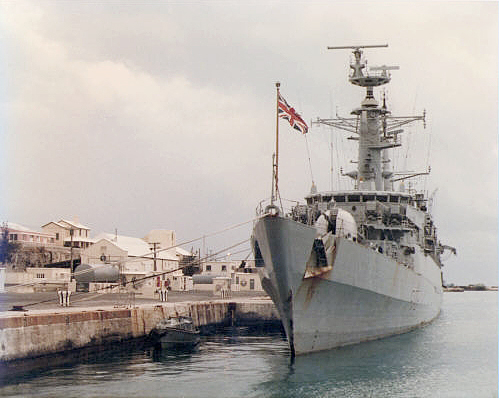
By the early 1990s, the West Indies Guard Ship – later renamed Atlantic Patrol Tasking North – represented the Royal Navy presence in the Caribbean and North-Western Atlantic. This presence was the Royal Navy’s commitment to protect the British Overseas Territories in the Caribbean and North Atlantic. Generally represented by a frigate, the mission also involved co-operation with the American and Dutch navies in anti-drug patrols. Despite the military withdrawn from Bermuda, the Royal Navy continued to operate in the region. In 1996, the Type 22 Frigate, HMS Brave conducted successful patrols in the area, being responsible for significant drugs seizures during its deployment. Nevertheless, beyond that, the British military presence in Bermuda was reduced to occasional naval deployments.
Alongside Montserrat, Gibraltar and the Falkland Islands, Bermuda is one of the four British Overseas Territories that maintain a locally raised defence force. The Royal Bermuda Regiment (RBR) – established in 1965 – is the amalgamation of the two original voluntary forces raised by the territory in the 1890s, the Bermuda Militia Artillery and the Bermuda Volunteer Rifle Corps. Technically the Royal Bermuda Regiment is an infantry battalion with roughly 600 personnel; the relatively small population of the territory limits the numbers conscripted yearly.
The military tasking of the Bermudian forces was the defence of the Royal Navy’s facilities and the close co-operation with the British Armed Forces on the islands. Nevertheless, as Britain began its withdrawal in the 1950s and ceased to issue the imperial defence plans, the duties of the Bermudian garrison shifted to the internal security of the territory, occasional ceremonial duties and disaster reliefs in Bermuda and British possessions in the Caribbean. As Bermuda is a British territory, the local troops are under the control of the Governor and Commander-in-Chief of the island. The unit is commanded by a Lieutenant-Colonel who is appointed by the Governor after advice from the Defence Board.
The links between the Royal Bermuda Regiment with the British Army are especially seen through its unique relationship with the Royal Anglian Regiment. The roots of this proximity go back to the beginning of the Great War when the 2nd Battalion of the Lincolnshire Regiment – one of the predecessors of the Royal Anglian Regiment – was serving in Bermuda. In the last two decades, a relationship would also be developed with the Royal Gibraltar Regiment. The decades of American presence also contributed to the training of the Bermudian forces in the United States alongside the US Marine Corps. Other countries that received the Regiment for training are Jamaica and Canada.
Lastly, Britain is responsible for the defence of Bermuda and its foreign relations. As a British Overseas Territory, those matters are reserved to the British Government. Despite that, Bermuda is self-governing, having its constitution and parliament. The Parliament of Bermuda is amongst the world’s oldest legislatures. In 1995, the Parliament narrowly approved an independence referendum. The result was that roughly 74% of the voter were against independence. Therefore, Bermuda remained a British territory, and since the Handover of Hong Kong in 1997, the small archipelago has been Britain’s most populous – roughly 71,000 inhabitants – and wealthy overseas territory.
Often ignored by British imperial history, Bermuda has played an essential role in supporting Britain’s interests in North America and the Caribbean. The reliance on Bermuda during the early years of the colonisation of Virginia, during the American Revolution, the Napoleonic Wars and the War of 1812 are historical examples of how Bermuda was relevant and useful to Britain when needed. In the twentieth century, the islands witnessed the height of its military use, especially during the World Wars, when its strategic position was central for the security of the convoys headed to Britain. The Cold War was represented by the gradual British withdrawal, the American presence and the anti-submarine patrols.
In 1995, when Britain closed its last naval facility on the islands, Bermuda had almost four centuries of ceaseless contributions to British interests.


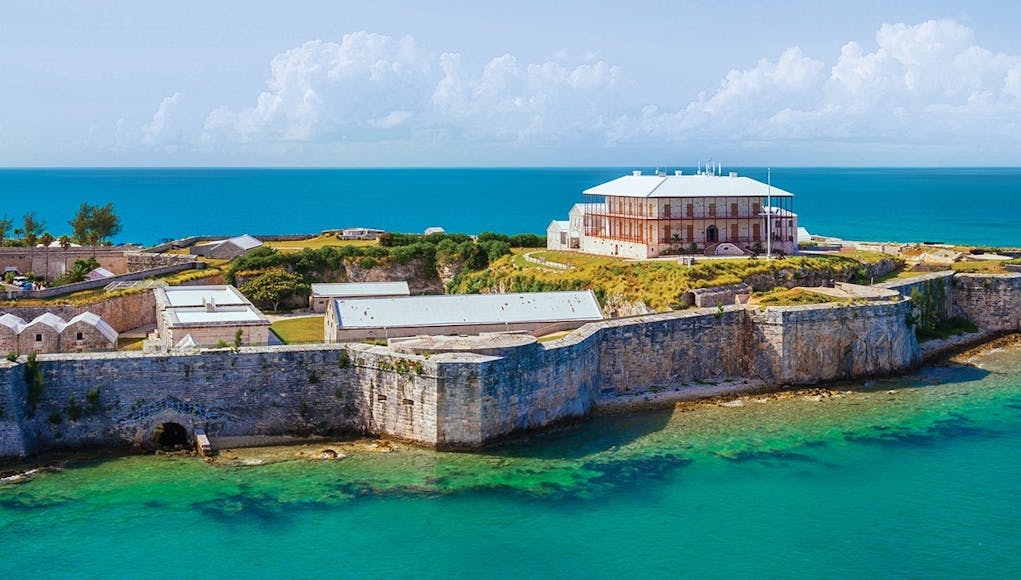
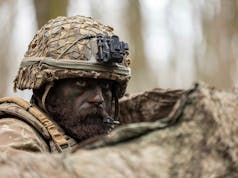
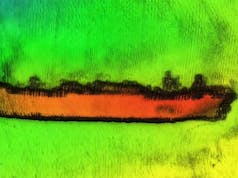
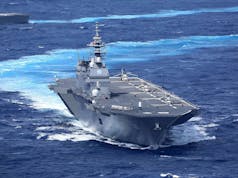
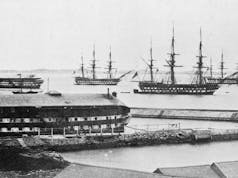

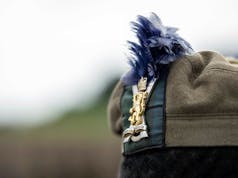
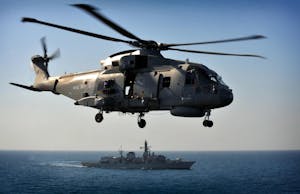








Nice Read.
What an interesting article. Thank you.
I had a pleasant experience in Bermuda when my little bike wouldn’t start. A friendly policeman helped me start it. No ticket or anything. I watched the Royal Bermuda regiment paraded in Hamilton. Very nice place, very nice people. Don’t know what the naval base could do today, though.
Naw, too hard a duty station. And the weather is not conducive to good morale.
Yeah, I love Bermuda. Beuitiful place, so is the Cayman Islands. Long may they stay british, let’s get the navy base opened again.
Stores Assistants??? Long gone Logistics Branch
A great place to visit. I was there most notably in Feb 92 as part of a 4 ship Dartmouth Training Squadron trip and also visited a couple of other times over the years HMS Malabar was famous for the visiting ships painting their crests on a wall. Sadly the last of those have gone as the yard has been redeveloped and nothing now remains of them. They can be seen here including HMS Brazen who I was on at the time… http://www.bermuda-online.org/rndshipscrestswalls.htm I can also say that the Bermuda Regiment are excellent hosts for all the right reasons…I had… Read more »
What a shame the same value wasn’t put on those as a Banksy, thanks for the preserved memories.
One of my favourite runs ashore, a lot ‘couther’ than usual. Lovely place with friendly people.
just an opinion, but perhaps Britain would consider putting British military back on Bermuda, as you never know when you might need extra facilities in the future.
Thank you. Good and informative article.
A good read, it is a shame that the royal navy closed its last naval facility. Either way, i’m sure those who served on the island were grateful to be stationed in such a nice location.
Between April 1972 and April 1974 I was part of the Royal Marine Detachment of HMS Sirius, (1 Lt RM, 1 Sergeant, 2 Corporals and 20 Marines). During February 73 we arrived in Bermuda for a period of maintenance at HMS Malabar. It was during this time that the Governor of Bermuda, (Sir Richard Sharples), and his ADC, (Capt Hugh Sayers), were assassinated, as they strolled in the gardens of the Governor’s residence one evening after dinner, (they even killed his dog; a Great Dane named Horsa). A few weeks later Sirius played a major role at the funeral. Alongside… Read more »
http://www.youtube.com/watch?v=wDBf_kNxW60
I must be a bit older than you lot. I remember Bermuda during an 15 month West Indies patrol 1961/1962 I was on HMS Troubridge. An AD Frigate built in 1941 ( same year I was Born). Bermuda was our home base as SNOWI Senior Naval Officer West Indies office was at Ireland island We always came back there after various excursions in the Caribbean. After Hurricane relief in British Honduras ( now called Belize) We were there for a month. What a piss up that was, sailors in charge of the bonded warehouse. Not only staggering round for a… Read more »